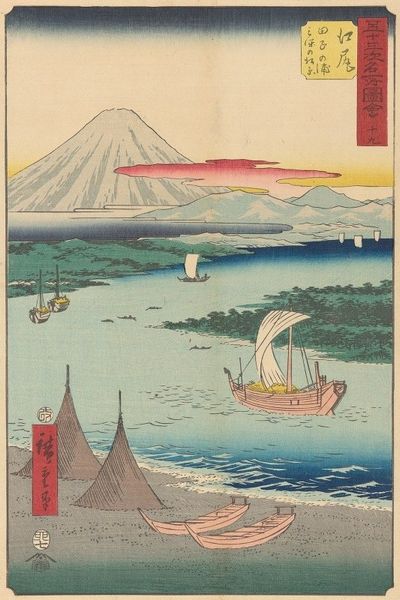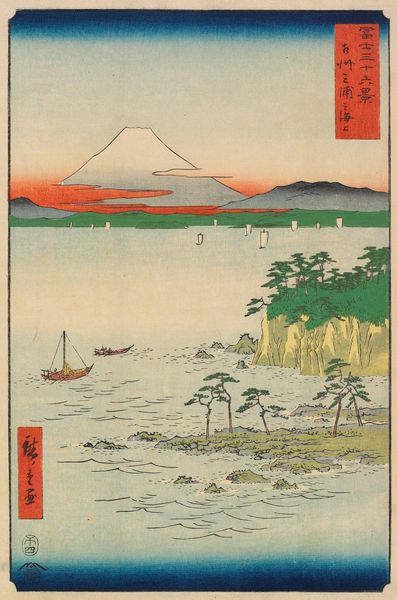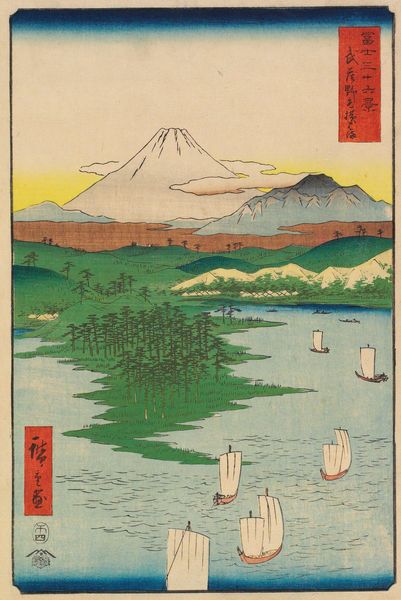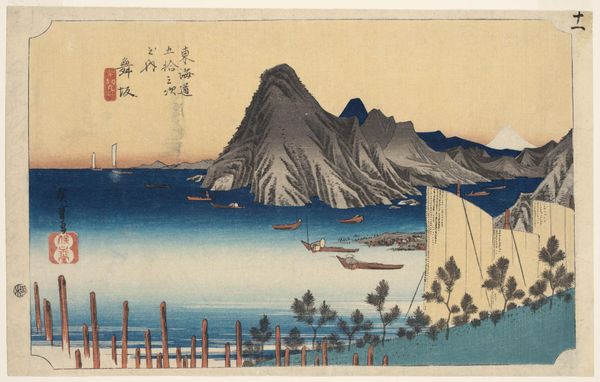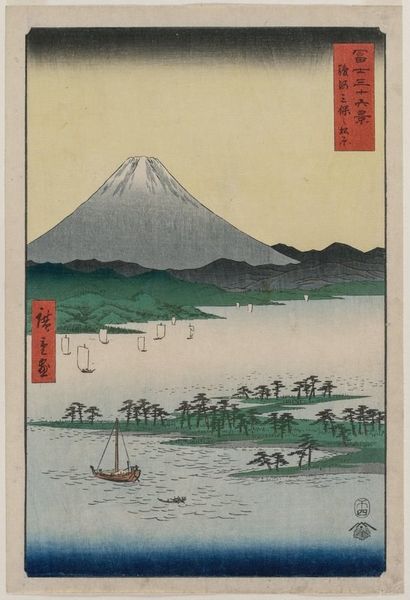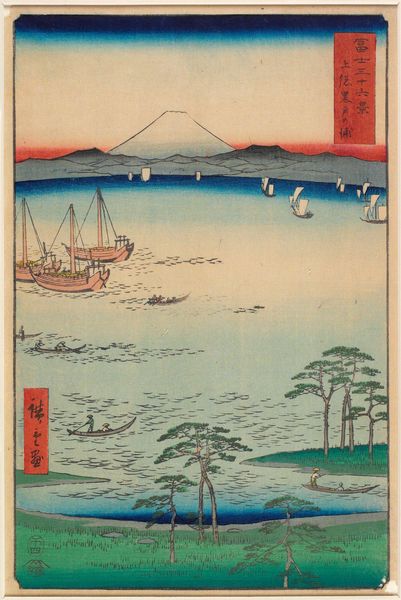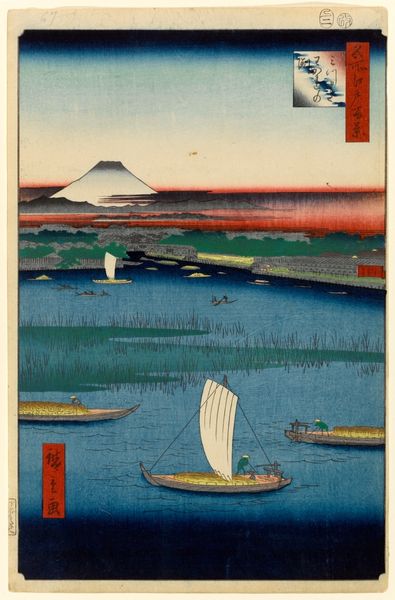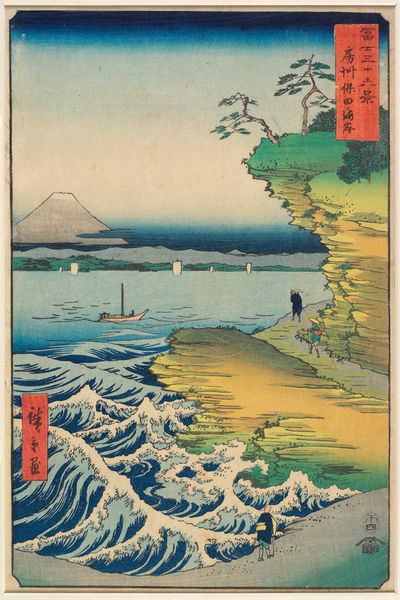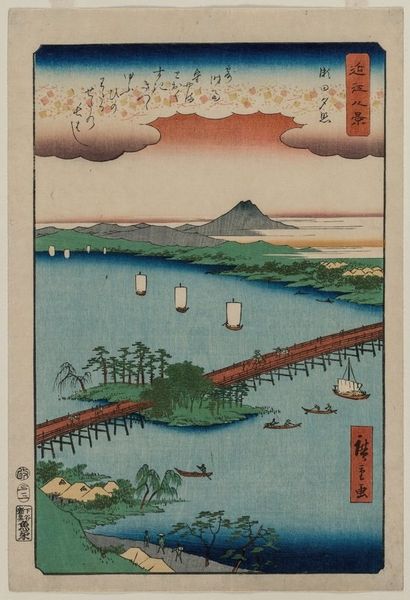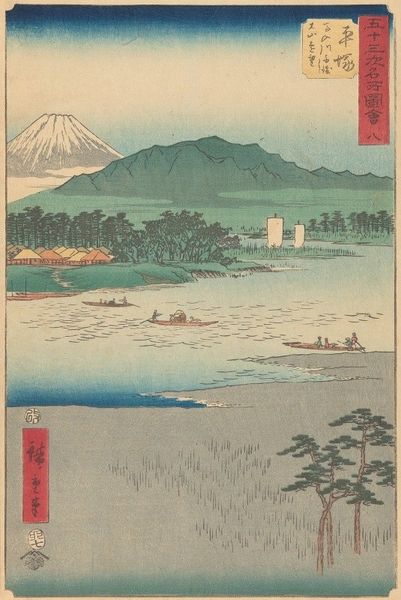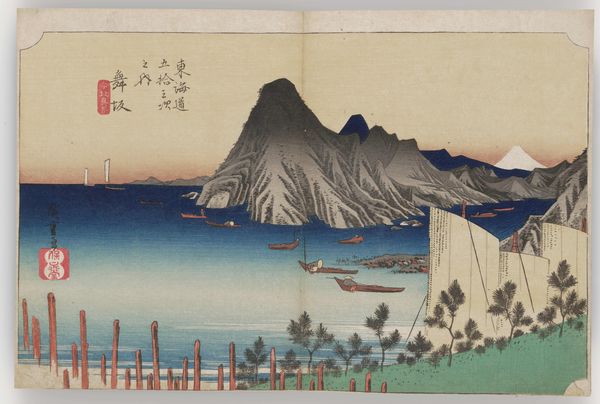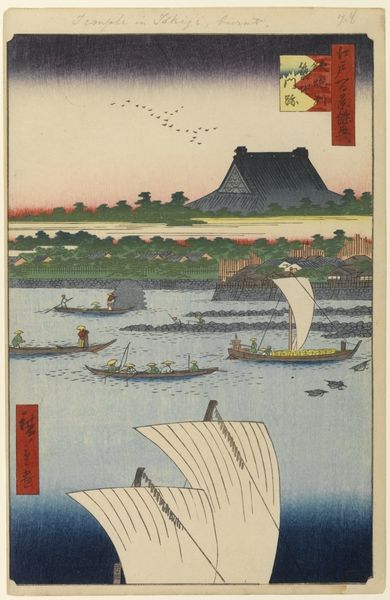
print, woodblock-print
# print
#
asian-art
#
landscape
#
ukiyo-e
#
woodblock-print
Dimensions: 36.2 x 23.5 cm
Copyright: Public domain
Curator: Utagawa Hiroshige’s woodblock print, "Folio From the Upright Gojusan Tsuji Tokaido," created in 1858, presents a stunning coastal vista. The print work's composition really grabs the eye. Editor: It certainly does. The placid blues and grays give the scene a tranquil quality, yet there's something subtly melancholy about it, wouldn't you agree? Maybe it is just the looming volcano on the horizon. Curator: That "something" might be the deliberate use of line and color; notice how the linear perspective leads your gaze to that dominating mountain, grounding the aesthetic importance of the image with its solemn immovability, which in turn is countered by these vessels traversing a scene defined by subtle wave crests. These ships bring balance to a powerful work. Editor: Absolutely. But there is tension that remains for the contemporary observer. The ukiyo-e tradition, while seemingly depicting 'the floating world,' frequently served as propaganda reflecting socio-political conditions. Consider that maritime traffic represented a critical means of resource distribution at that time; yet what access did people of lower economic and social status really have? Where are their boats? Is this landscape truly for everyone or only an imagined space, a 'floating world,' reserved only for the privileged? Curator: Interesting point. Yet if we fixate only on your critique, aren't we then losing the intentional artistry— the complex visual techniques, color composition, the overall grace of the piece, especially Hiroshige's signature atmospheric effects? He elevates, here, a very particular understanding of space. It is that mastery which moves me to explore further the nature of form and function. Editor: Agreed! The work, itself, contains contradictions that can be parsed across a spectrum of inquiry. The scene itself feels immediate; simultaneously, the boats are still used, so we might ask who are the people making these decisions for commerce, travel, and personal interest? What kinds of socio-economic disparities exist in that local system that can inform present day inequality. Curator: It’s intriguing to consider all these layers of interpretation sparked by the deceptively simple lines of Hiroshige's creation. Editor: Indeed, it encourages a necessary interrogation of landscape, power and privilege, both then and now.
Comments
No comments
Be the first to comment and join the conversation on the ultimate creative platform.
